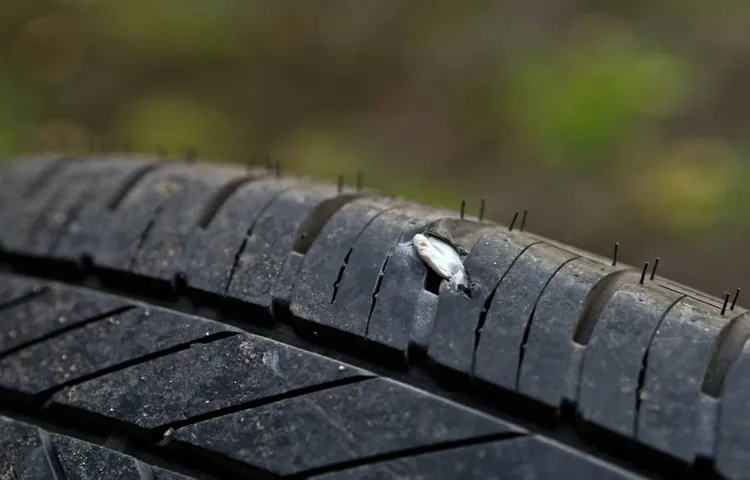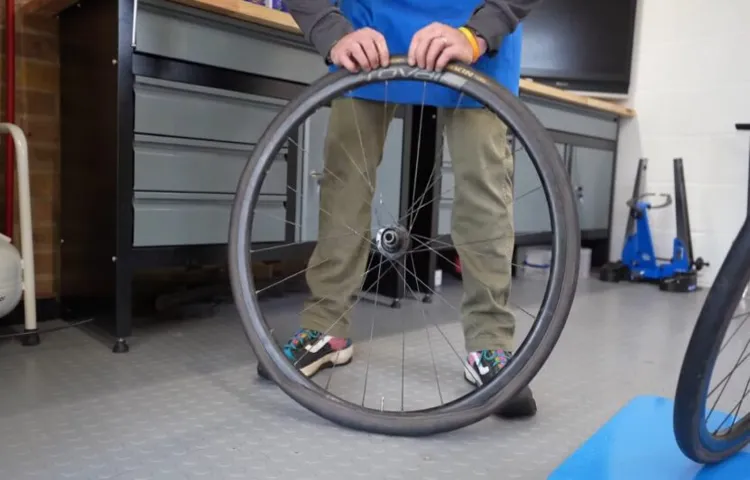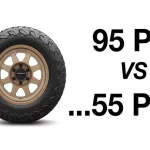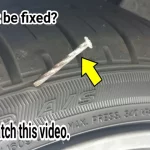Have you ever experienced the frustration of a bike tire popping multiple times? It’s a common issue among cyclists and can really put a dent in your riding plans. The good news is that there are several reasons why your bike tire may keep popping, and once you figure out the root cause, you can take steps to prevent it from happening again in the future. From improper inflation to worn-out tires, we’ll explore some of the most common culprits behind pesky popped bike tires.
So, hop on and let’s dive into the nitty-gritty details of why your bike tire may keep popping.
Possible Causes
If you find that your bike tire keeps popping, it can be frustrating and even dangerous. There are several possible causes for this issue. One possible cause could be underinflation, as riding on a tire with low pressure can cause it to wear out more quickly and increase the risk of punctures.
Another potential reason could be sharp objects on the road that puncture your tires, such as glass or nails. Additionally, poor tire quality and worn out treads can also be responsible for tire punctures. It is important to check your tire pressure regularly, inspect your tires for any signs of wear or damage, and avoid riding in areas with potentially hazardous debris on the road.
By taking these precautions, you can reduce the risk of your bike tire popping and ensure a safer and more enjoyable ride.
1. Overinflated Tire
An overinflated tire can cause a lot of damage and can be quite dangerous to drive on. There are several possible causes of an overinflated tire. One reason may be that the tire was filled with too much air during an inflation, which can result in an overfilled tire.
In addition, extremely hot weather can also cause an increase in tire pressure. This can also happen if you drive long distances or carry heavy loads on your tires. It is essential to regularly check your tire pressure to ensure that it remains within the recommended range and adjust it as necessary to prevent overinflation.
Failure to do so may result in tire failure or even a blowout while on the road, which can be catastrophic. Remember, your safety should always be a top priority, so don’t take any chances with tire pressure levels.

2. Underinflated Tire
An underinflated tire is a common issue that many drivers face, and there could be several possible reasons for it. One cause can be due to slow leaks that occur over time, typically caused by punctures or other damage to the tire’s rubber or valve stem. Another possible culprit could be a faulty tire pressure monitoring system, which fails to alert the driver when the tire pressure drops below recommended levels.
It’s also possible that the driver simply forgets to check their tire pressure regularly and neglects to inflate the tire to the proper pressure. Regardless of the cause, driving on an underinflated tire is dangerous and can lead to reduced fuel efficiency and premature tire wear. To avoid this problem, it’s crucial to check your tire pressure regularly and ensure they are inflated to the manufacturer’s recommended levels.
By doing so, you’ll not only prevent potential blowouts and accidents but also extend the lifespan of your tires while improving your vehicle’s overall performance on the road.
3. Punctures or Tears in the Tire
When it comes to punctures or tears in your tire, there are a few potential causes to consider. One common culprit is driving over sharp objects on the road, such as nails or broken glass. Another possibility is wear and tear on the tire itself, which can eventually lead to small holes or tears.
In some cases, over-inflation or under-inflation of the tire can also contribute to these kinds of issues. Ultimately, the key to avoiding punctures or tears is staying aware of your driving environment and regularly inspecting your tires for signs of damage or wear. By taking proper care of your tires, you can help minimize the risk of any unexpected blowouts or other safety hazards on the road.
Prevention Tips
Why does my bike tire keep popping? It’s a frustrating situation that every cyclist has experienced at least once. The most common reason why bike tire pops is because of an underinflated tire, small punctures, or worn-out tires. However, there are many things you can do to prevent your bike tire from popping.
Firstly, make sure to check your tires regularly and inflate them to the recommended pressure, which is usually marked on the sidewall of the tire. Secondly, avoid riding on rough surfaces that may cause cuts or punctures on your tires, such as sharp rocks or glass. It’s also important to replace your tires when they start to show signs of wear and tear, such as thinning treads or cracks.
Investing in quality tires will not only prevent punctures but also improve your bike’s handling and performance. Lastly, always keep a repair kit handy, including a spare tube, tire levers, and a pump, in case of emergencies. Taking these steps will ensure an enjoyable and safe cycling experience free from frustrating punctures.
1. Check Tire Pressure Regularly
As a responsible car owner, it is essential to keep your vehicle well-maintained and safe for yourself and other drivers on the road. One of the easiest ways to prevent accidents and breakdowns is by regularly checking your tire pressure. Low tire pressure can result in poor handling, decreased fuel efficiency, and a higher risk of blowouts or flat tires.
It only takes a few minutes to check the pressure with a gauge and adjust the levels if necessary. Don’t forget to also inspect the tires for any signs of wear and tear, such as cracks, punctures, or bulges. By taking these simple precautions, you can avoid costly repairs and keep yourself and others safe on the road.
Remember, prevention is always better than cure!
2. Inspect Tires for Wear and Tear
When it comes to ensuring the safety of your vehicle, one of the most critical aspects to check is the condition of your tires. Regular inspection of your tires for wear and tear is a crucial prevention tip that should never be ignored. Over time, tires can become worn out due to constant driving, exposure to extreme weather conditions, and poor road infrastructure.
Not only can worn-out tires hamper your vehicle’s performance, but they can also compromise your safety while driving. Therefore, it’s essential to check your tires’ condition regularly and replace them when necessary to ensure that they are in good working order. An easy way to check for tire wear is to examine the tread depth.
If the tread depth is less than 1/16 of an inch, it’s time to replace your tires. Additionally, check for any bulges, cracks or visible signs of damage on the tire surface. By regularly inspecting your tires, you can rest assured that you are driving a safe and reliable vehicle on the road.
3. Avoid Road Hazards
Prevention tips for avoiding road hazards are essential to ensure your safety while driving. One of the best ways to avoid road hazards is to maintain a safe distance from the car in front of you. This allows you to react in time if the vehicle ahead comes to a sudden stop or swerves to avoid an obstacle.
Another important precaution is to always scan the road ahead of you for potential hazards such as potholes, debris, or standing water. By staying alert and focused on the road, you can spot these hazards in advance, giving you plenty of time to adjust your speed or position to avoid them. Additionally, ensure that your vehicle is in good condition by regularly inspecting your tires, brakes, and lights.
Proper maintenance can help prevent accidents caused by faulty equipment. Overall, by exercising caution and staying aware of your surroundings while driving, you can reduce your risk of encountering road hazards.
What to Do if Your Tire Pops
Dealing with a popped bike tire can be frustrating and inconvenient. There are several reasons why a bike tire might keep popping, including over-inflation, punctures, and worn-out tires. Over-inflating your tires can cause the rubber to stretch, making it more susceptible to punctures or even bursting.
Punctures can be caused by sharp objects such as nails, glass, or rocks on the road. It’s important to regularly check your tire pressure and inspect your tires for any signs of wear and tear. If your tire does happen to pop while you’re riding, the first thing to do is safely pull over to the side of the road.
Avoid sudden braking and take care when steering to prevent losing control of your bike. Depending on the severity of the damage, you may need to replace the inner tube or the entire tire. In any case, it’s essential to regularly maintain your bike and ensure that your tires are in good condition to prevent any unexpected blowouts while riding.
1. Stop Riding Immediately
If you’re riding your bike and your tire suddenly pops, the most important thing to do is to stop immediately. Continuing to ride on a popped tire can cause serious damage to the bike and can even lead to injury. Once you’ve come to a stop, assess the situation.
If you have a spare tire or a repair kit, you may be able to fix the problem yourself and continue riding. But if you don’t have the necessary tools or if the damage is too severe, it may be time to call for help. Whatever you do, don’t try to ride on a popped tire for too long, as it can cause additional problems and may even make the situation more dangerous.
Remember, safety should always be your top priority when riding a bike.
2. Inspect Tire for Damage
One of the worst things that can happen when you’re driving is a tire popping. Not only can it be scary and unexpected, but it can also be dangerous if you don’t take the proper steps to handle the situation. One of the first things you should do if your tire pops is inspect it for damage.
Look for any visible punctures, cuts, or tears on the sidewall or tread of the tire. If you notice any damage, it’s important to replace the tire as soon as possible to avoid the risk of a blowout or further damage to your vehicle. On the other hand, if you don’t see any visible damage, you should still have your tire checked out by a professional to make sure there are no internal issues that may have caused the pop.
Remember, safety should always be your top priority when it comes to driving, so don’t hesitate to take action if your tire pops.
3. Replace or Repair Tire
If you experience a flat tire while driving, don’t panic! The first thing to do is to safely pull over to the side of the road. Once you’re safely on the side of the road, you can assess the situation. If you have a spare tire and the necessary tools, you can change the tire yourself.
However, if you’re not comfortable doing so, or if your spare tire is also flat, you’ll need to call a tow truck or roadside assistance. It’s important to remember that driving on a flat tire can damage your wheel rim and cause additional problems, so it’s best to avoid doing so if at all possible. If you decide to change the tire yourself, make sure to replace it with a new one as soon as possible.
If the puncture is small, you may be able to have it repaired instead of replaced. However, if the tire is severely damaged, it’s best to go ahead and replace it. Remember to always check your tire pressure regularly, as proper inflation can help prevent flats from occurring in the first place.
Conclusion
Well, it seems like your bike tire is trying to tell you something – perhaps it’s tired of carrying you around all day and night! But in all seriousness, there are a few reasons why your tire might keep popping. It could be due to a faulty tube, low tire pressure, or even a puncture from an outside object. Whatever the cause, be sure to address the issue promptly so you can get back to cruising on your trusty two-wheeler.
And remember, a little bit of maintenance goes a long way in ensuring a smooth and safe ride for years to come!”
FAQs
What are the common causes of bike tire popping?
Common causes of bike tire popping include improper inflation, overloading, punctures, worn-out tires, and impacts.
How can I prevent my bike tire from popping?
To prevent your bike tire from popping, make sure to maintain proper tire pressure, avoid overloading, use puncture-resistant tires, replace worn-out tires, and watch out for road hazards.
Why does my bike tire keep losing pressure?
Your bike tire may be losing pressure due to punctures, a damaged valve, or faulty inner tubes. Make sure to inspect your tire regularly and address any issues promptly.
Can I repair a punctured bike tire myself?
Yes, you can repair a punctured bike tire yourself using a tire patch kit. However, if the damage is extensive or the tire is worn out, it may be necessary to replace the tire instead.
How often should I check my bike tire pressure?
It is recommended to check your bike tire pressure every 1-2 weeks or before each ride to ensure optimal performance and safety.
What should I do if my bike tire pops while riding?
If your bike tire pops while riding, try to maintain control of your bike and slow down gradually. Find a safe place to pull over and replace the tire or call for assistance if needed.
Is it necessary to replace both bike tires at the same time?
It is recommended to replace both bike tires at the same time to ensure even wear and optimal performance. However, if only one tire is damaged or worn, you can replace just that tire.



